Saint-Paul-de-l'Île-aux-Noix — Protecting nature is as easy as 1, 2, 3, 4, 5!
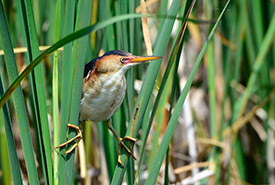
Least bittern (Photo by Steve Arena - USFWS)
5 islets…
. . . in the Richelieu River, at Saint-Paul-de-l’Île-aux-Noix, are now protected for the long term by the Nature Conservancy of Canada (NCC). Five! We’re thrilled to share this great news, especially since rare species have been spotted here!
4 partners…
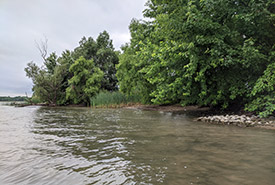
Protected islet on the Richelieu River, QC (Photo by NCC)
. . . teamed up to complete the project: family members seeking to protect their inheritance; NCC; a new property owner who will commission a field survey of species on the islets in the summer of 2022; and two financial partners — the Government of Quebec and the U.S. Fish and Wildlife Service.
3 family members (1 brother and 2 sisters) …
. . . once owned the islets. When Sylvie, Julie and Richard were children, their father purchased the land for family camping trips. To honour the memories of their youth, the three siblings want to make sure the islets are protected for the long term. NCC thanks the Racicot-Toupin family for their generosity.
2 vulnerable bird species...
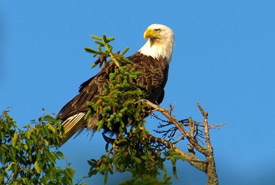
Bald eagle (Photo by Keith Mombour)
...have been identified in the area: bald eagle and least bittern. As wetlands comprise the islets, which are ideal habitat for both species, it is very likely they will remain here to hunt.
Adult bald eagles are easily recognizable by their white-feathered heads. This national emblem of the United States is also found in Quebec.
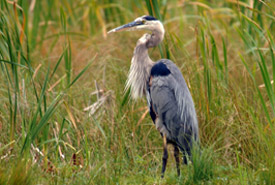
Great blue heron on shore (Photo by Karol Dabbs)
The little-known least bittern, which can be found only in the southernmost part of Quebec, is considered a vulnerable species and has been designated threatened in Canada. It is our North American’s smallest heron and lives in wetlands, just like its better-known cousin the great blue heron. Do you see a family resemblance?
1 rumour…
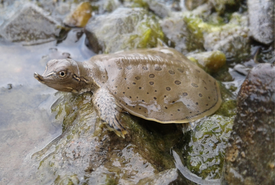
Release of a spiny softshell turtle (Zoo by Granby)
. . . is going around the neighbouring Île aux Noix. Residents have reported seeing a spiny softshell turtle on the shore. This endangered species once inhabited the Richelieu River, but that was a long time ago. The biologists who conduct the field survey of the newly acquired islets will be keeping an eye out for this turtle as they wander the shoreline. Is this turtle a lone adventurer or is it returning to the river? Scientists are unsure, but their hope is for the latter.



